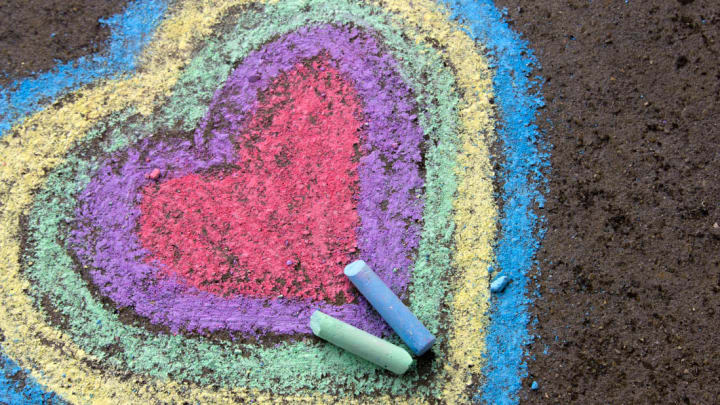The chalk you used as a kid may have been made from the skeletons of ancient plankton, compressed into rock over millions of years. While slightly unsettling, science writer Ferris Jabr pointed out on Twitter that this looks pretty remarkable under a microscope:
If you put chalk under a powerful microscope—white cliffs of Dover type chalk, not the modern blackboard variety—you will see something like this
— Ferris Jabr (@ferrisjabr) July 26, 2018
Because it's not just a rock. It's an accumulation of ancient skeletons: the armored husks of single-celled, ocean-dwelling plankton pic.twitter.com/ZBGZb4aKLd
The type of chalk shown in the photo, taken by scientist Jeremy Young, is made of calcium carbonate. The chalk layers of this soft limestone were formed from the remains of coccolithophores, a type of marine phytoplankton with an intricate exoskeleton. Nowadays, most blackboard chalk is made from gypsum, but some varieties (like Crayola's Anti-Dust White Chalk) are still made from calcium carbonate.
England's White Cliffs of Dover, one natural example of this phenomenon, were formed nearly 100 million years ago. The skeletons sank to the ocean bed, and the cliffs rose from the ocean due to a shift in the Earth's crust, Gizmodo explains.
Of course, some of the most beautiful things in life have an unsavory scientific explanation. Take for instance the sand that makes up Hawaii's beaches—it comes from parrotfish poop. According to the National Oceanic and Atmospheric Administration (NOAA), "The fish bite and scrape algae off of rocks and dead corals with their parrot-like beaks, grind up the inedible calcium-carbonate reef material (made mostly of coral skeletons) in their guts, and then excrete it as sand."
You'll never look at the beach the same way again.
